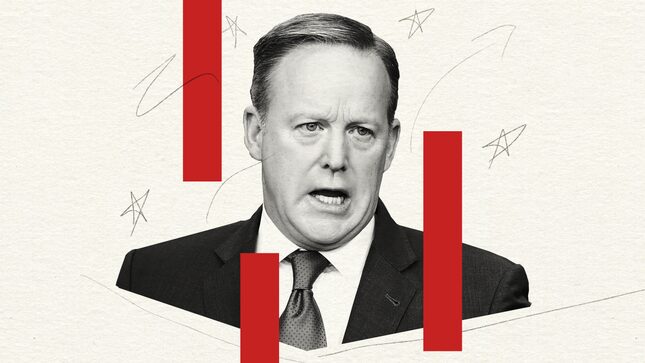
Illustration: Elena Scotti (Photos: Getty Images)
I had to do a lot of googling to remember more than a few vague details about Sean Spicer, the first of many White House press secretaries who served under the Trump administration. I could barely recall that Spicer had once claimed that Hitler “didn’t even sink to using chemical weapons,” or that he had amplified Trump’s baseless allegations that Obama had wiretapped Trump Tower during the 2016 presidential election. I did, however, remember Spicer’s original sin: lying about the size of the crowd that gathered at Trump’s inauguration at his very first press briefing. “Yesterday, at a time when our nation and the world was watching the peaceful transition of power, some members of the media were engaged in deliberately false reporting,” Spicer said (almost four years ago to the day!). “Photographs of the inaugural proceedings were intentionally framed in a way, in one particular tweet, to minimize the enormous support that gathered on the National Mall.”
-

-

-

-

-

-

-

-

-

-

-

-

-

-

-

-

-

-

-

-

-

-

-

-

-

-

-

-

-

-

-

-

-

-

-

-

-

-

-

-








































